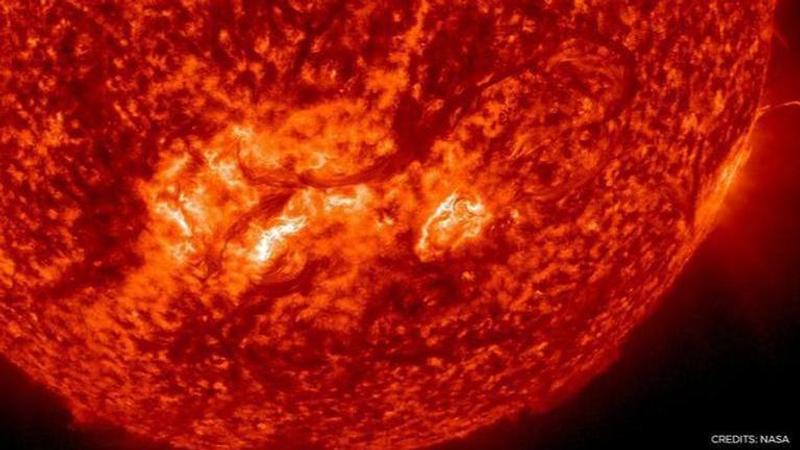Published 10:15 IST, October 12th 2021
Solar Flare Today: How do Solar Flares affect Earth, is it dangerous? All you need to know
According to NASA, solar flare is understood to be an intense burst of radiation that come after magnetic field lines near sunspots tangle, cross & reorganize.

The United States National Oceanic and Atmospheric Administration on Monday issued a warning against an enormous geomagnetic storm caused by a strong solar flare. According to the department, the solar flare could cause massive disruption to power grids and affect spacecraft and satellites. The phenomenon is also expected to cause the northern lights to be visible in New York.
The massive solar storm set to hit earth today could potentially cause major disruption. A G2, or moderate warning was issued based on the geomagnetic storm watch readings. According to experts, the possible effects of the sudden flash due to the increased brightness from the Sun 93 million miles away could be felt from the Earth. But is it dangerous? Let’s find out.
What are Solar flares?
According to NASA, solar flares are intense bursts of radiation that come after magnetic field lines near sunspots tangle, cross, and reorganize. Solar flares are sometimes accompanied by a coronal mass ejection (CME for short). CMEs are huge bubbles of radiation and particles from the Sun. They explode into space at very high speed when the Sun’s magnetic field lines suddenly reorganize. Big flares can cause major disruptions on the Earth as mentioned earlier.
Are solar flares dangerous?
Although, solar flares are high radiations, this phenomenon is not dangerous to humans on the surface of the earth. The geomagnetic storm could have a technological impact on the man-made power grids and satellites, but not cause any effect to humans. Earlier in 1989, a strong solar eruption caused the Canadian Province of Quebec to lose power for nine hours, showcasing how big an effect it could have.
Solar flares classification
Solar flares are classified as A, B, C, M or X based on their X-ray brightness. A is the smaller while X is the largest and brightest. The recently observed solar flare was the first X flare spotted on the sun's surface since a new solar cycle began in December 2019. The sun undergoes an 11-year activity where it swells to a peak at the middle of the cycle and then begins to quiet down until the end of the cycle when it all repeats.
Solar flare today
Although a fixed time can’t be confirmed, the Met Office Space Weather Operations Centre (MOSWOC) have predicted that the geomagnetic storm is expected to last till evening today. “A CME launched on the 9th October is expected to arrive at Earth during the 11th (most likely during the afternoon or evening), lasting into the 12th. G1-G2 storming is likely, with a chance of isolated G3 intervals,” MOSWOC tweeted.
Image: NASA
Updated 10:15 IST, October 12th 2021



